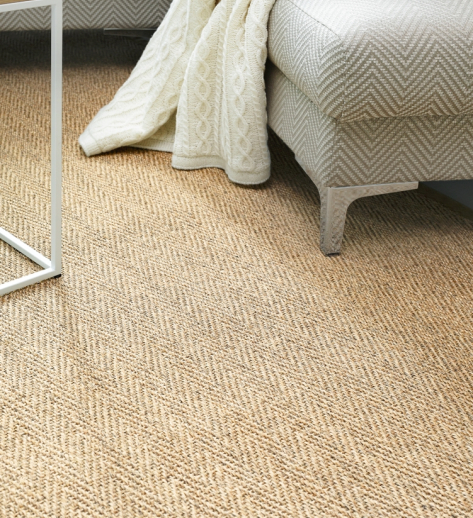USER INFO
- Narma sisalWeave rugs are suitable for domestic use and other low-traffic indoor spaces.
- The weft material is 100% natural sisal; backside is anti-slip latex.
- The rug is finished with a cotton border.
- The surface of the new sisal rug as well as the border can be treated with the suitable rug or textile protector. Follow the instructions of the producer.
- The rug can be also used in rooms with hydronic underfloor heating.
- Direct strong sunlight may cause the rug to fade.
- Avoid using in damp rooms or other areas where the rug may come into direct contact with water or snow.
- Do not place the rug on a wet floor after the floor washing.
- It is common that the latex backing can crumble to some extent in the process of using the rug.
CARE & CLEANING
- sisalWeave rugs are easy to clean.
- Vacuum the rug regularly to remove dust and dirt.
- Remove liquid stains with a paper towel, clean sponge or soft cloth as quickly as possible to prevent the liquids from soaking into the rug.
- Stains can be cleaned with a soft cloth dampened in clean water or neutral soap solution.
- Greasy or oily stains should be first dried with a soft absorbent paper towel. After that cover the stain with a layer of a potato starch, let the powder sit for 24 hours and then vacuum it carefully up.
- Use as little water as possible when cleaning sisal rugs because sisal may shrink when wet.
- After cleaning, the area should be dried as quickly as possible, for example with a clean absorbent cloth and afterwards with a hair dryer.
- Excessive scrubbing may leave spots on the rug surface.
- Professional cleaning service is recommended.
- The surface of the rug can be cleaned at home with a dry foam rug shampoo which is the most suitable detergent for rugs made of natural materials.
- Use only detergents which do not contain bleach or lanolin.
- The rug should be stored only in a roll. Folding may lead to permanent creases.
QUESTIONS & ANSWERS
- Question: What type of material is sisal?
Answer: Sisal is a natural fibre which is produced from the leaves of agave cactus. - Question: Are sisal rugs suitable for offices?
Answer: Sisal fibre is a strong and durable material, thus sisal rugs or wall-to-wall carpets suit well the public spaces. However, it is important to intall proper dust and dirt mats, because it might be difficult to remove excessive dirt from the surface of the sisal rug. - Question: Why is my sisal rug not rectangular?
Answer: Sisal is a natural and vivid material which is manufactured with rather loose weave, consequently the fabric lines may indeed not be exactly straight. In order to ensure the good appearance of the final product and to guarantee that the edge of the border matches the fabric pattern, it is a common practice to cut the sisal rugs by the weft and warp lines. As a result, it might happen that the sides and the ends of the rug are not exactly at right angles. It is also normal that the size of the rug may change during the usage and maintenance, the size is also dependant on the humidity level of the room. - Question: How to prevent the rug corners and edges from curling up?
Answer: Narma sisal rugs are finished in a way that the bordered edges lay properly flat on the floor. However, depending on the indoor climate as well as other user-specific conditions, the corners of the sisal rug may curl up. This is considered a common characteristic of sisal rugs. It is suggested first to stretch slightly the rug edges and then to work the curled corner in the opposite direction. As an alternative, double-sided carpet tape can be used to fix the corners and/or the edges of the new rug in the most high-traffic directions.
MANUFACTURER'S INFO
- Size variations ± 2% may occur.
- Dye lot variations may occur by product batches.
- The manufacturer is not responsible for the colour difference of the product sample and the ordered rug.
- The manufacturer reserves all rights to change and amend the technical specifications and features of the products in the process of product development without prior notice.
